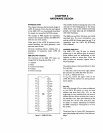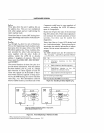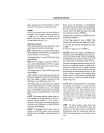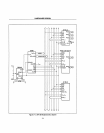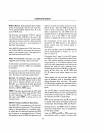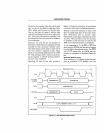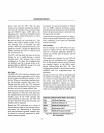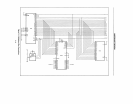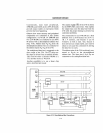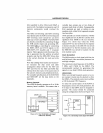
HARDWARE DESIGN
the bus for the transfer. This data will be read
into, or out of, the
8088
through pins ADo-
AD?, which now function as the data bus.
Also
at
this time the upper 4 address lines
switch from address (AI6-AI9) to status
(S3-
S6).
The status information available from
decoding these lines
is
primarily for diagnos-
tics monitoring.
However,
S3
and
S4
can be decoded to
determine which of the four segments
is
being
accessed by that particular machine cycle.
This information can be used to select one
of
the four memory segments (Code, Data,
Stack or Extra) being addressed by the iAPX
88.
This technique allows memory partition-
ing by segment to expand memory address-
ing up to four megabytes.
Decoding
S3
and S4 can also provide a
degree of memory protection, by preventing
erroneous writes into overlapping segments.
During
T3
the
CPU
continues to assert write
data or sample read data on the lower 8 bus
lines (ADo-AD?) and to provide status
information on the upper 4 bus lines
(A161
S3-
AI9/S6).
This state'allows time for the data
to stabilize on the bus and be read by the
8088
or the selected memory or peripheral.
At the beginning of T
4 the
RD
or
WR
line
goes inactive (HIGH) and the data
is
latched
into the
8088
or the selected device. The
DEN
and DT/R: signals also go
HIGH
and the
memory or peripheral
is
deselected from the
bus.
Extending
Machine
Cycle
If
the memory or 110 device cannot transfer
data
at
maximum CPU transfer rate, the
/
1 ....
__--------
ONE
BUS
CYCLE----------i
... 1
CLK
A19/S8-6
~
ADDRESS
OUT
X
STATUS
OUT
}--
A16/S3
----.r-\,-
_
____
---'.
\....
____________
---1
A1s-Aa
~
ADDRESS
OUT
}-
ADrADo
--------t(
ADDRESS
OUT
))------;{1-
__
D_A_T_A
__
.....
))------
ALE
/
\L-
____
-----tl
101M
~~
______
L_O_W_=_M_E_M_O_R_Y_,
H_I_G_H_=_I/_O
______
L
WR
OR
RD
\\........
___
---11
Figure 3-7. iAPX
88
Basic Machine Cycle
3-7





